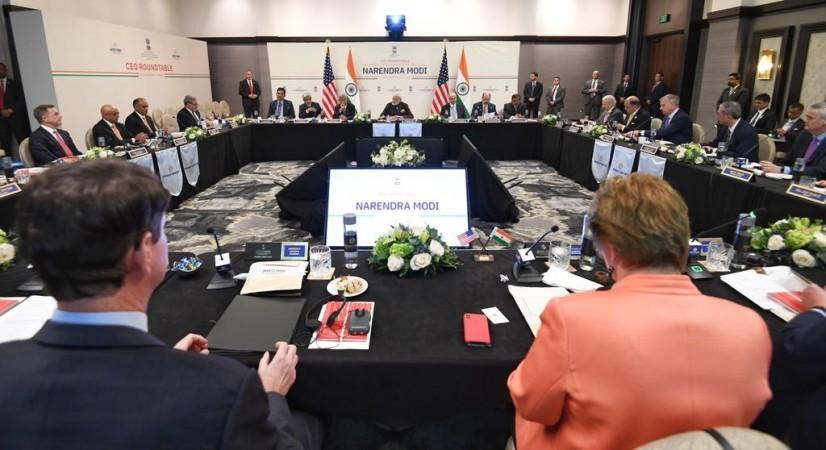India's proposed $7.5-billion investment in a US liquefied natural gas (LNG) project is a major boost to the long-term strategy of the government of Prime Minister Narendra Modi for a gas-based economy. The deal signed between Petronet LNG Limited (PLL) and Tellurian Petronet is for investment, including a $2.5 billion equity participation, in the Lousiana plant. The tie-up will prove a significant step in the government's efforts to diversify the LNG sources as the country tries to raise to 70 million metric tonnes per annum it imports by 2025 from its current 10 mmtpa, reports say.
The government is also planning to connect 10 million households to piped natural gas by 2020 as part of its drive to promote the use of cleaner fuels, a report on the Livemint website says. The deal is also a morale booster for US President Donald Trump, who made a joint appearance with Prime Minister Modi at the 'Howdy, Modi' event at Houston, Texas, after betting heavily on reviving the shale gas economy.

Petronet's investment will amount to 18 percent equity in the $28 billion Driftwood LNG terminal, the largest outside holding so far in the project, and negotiate the purchase of 5 million tonnes of gas per annum, the report says. The remainder of the total will come from debt, the report quotes Tellurian chief executive officer (CEO) Meg Gentle as saying. The deal will be signed by the end of this 2019-20 financial year.
"We will sign the document sometime in the first quarter and we will have financing ready to close simultaneously, and then we will begin construction," the report quotes Gentle as saying. "India is one of the fastest-growing markets for LNG and should soon become the second-largest LNG importer," according to her.

The pact was signed on the sidelines of Prime Minister Modi's much-talked-about meeting with top executives of US energy majors in Houston. In the first engagement of his week-long visit to the US, Modi met 17 CEOs of US energy companies including Tellurian Inc, Exxonmobil, BP Plc, Cheniere Energy, Dominion Energy, and Total SA. Modi was accompanied by petroleum secretary M.M. Kutty, external affairs minister S. Jaishankar, foreign secretary Vijay Gokhale, and India's ambassador to the US Harsh Vardhan Shringla, the report says.
Indian companies already have invested $4 billion in US shale gas assets. "Petronet will invest $2.5 billion in Tellurian's proposed Driftwood LNG export terminal, in exchange for the rights to 5 million metric tonnes of LNG per year over 40 years," the external affairs ministry spokesperson told newspersons.
India, which until 2004 bought LNG only from the world's largest producer Qatar, has been rapidly diversifying procurement considering the difficult geopolitical situation in the Middle East. The diversification has been necessary because the US sanctions on Iran and President Trump's refusal to extend an exception to India has put Iranian gas beyond India's reach. India now imports LNG from Nigeria, Australia, Russia, the UAE, Norway, Indonesia, and Oman.
India is third on the list of the biggest emitters of greenhouse gases after the US and China and has been pushing to reduce carbon emissions by 33-35 percent from its 2005 levels by 2030. India is a signatory to the UN Framework Convention on Climate Change adopted by 195 countries in Paris in 2015.
It is impossible to come to Houston and not talk energy!
— Narendra Modi (@narendramodi) September 22, 2019
Had a wonderful interaction with leading energy sector CEOs. We discussed methods to harness opportunities in the energy sector.
Also witnessed the signing of MoU between Tellurian and Petronet LNG. pic.twitter.com/COEGYupCEt
Prime Minister Modi said in a tweet: "It is impossible to come to Houston and not talk energy! Had a wonderful interaction with leading energy sector CEOs. We discussed methods to harness opportunities in the energy sector. Also witnessed the signing of MoU between Tellurian and Petronet LNG."
The share of LNG at 6.2 percent in India's primary energy mix is far behind the global average of 24 percent. The government plan is to raise this to 15 percent by 2030 by driving up the use in the fertilizer industry, power generation, city gas distribution for domestic consumption through piped gas, and the steel sector.

















